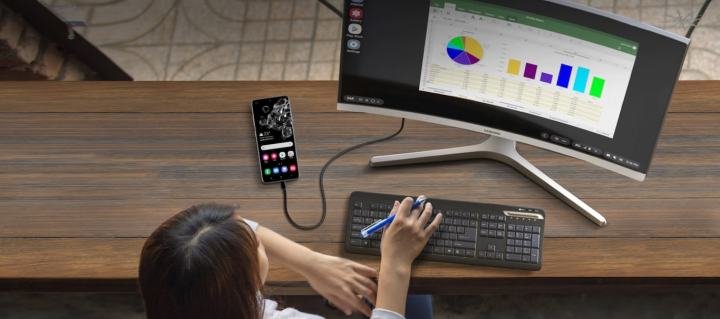One thing that might have gone under the radar at the Samsung Galaxy Z Flip 7 and Z Fold 7 launch is the fact the smaller phone now joins its larger sibling by adding DeX support.
DeX, for those that might be unfamiliar, is a feature where you can plug a Samsung smartphone into a dock or monitor and emulate a much more fully-formed computing experience, more akin to using a laptop than a phone.
It’s limited in functionality, but allows you to browse the web, work with documents or spreadsheets and run a number of apps in a PC-like environment on a larger screen.
So why now, seven iterations of the design in? Surely the phone could have managed to achieve the experience before, given the stellar improvements we’ve seen to smartphone power in recent years?
It turns out Samsung has been constantly moving the goalposts by adding in more functionality to DeX.

“With One UI 8 on the device, there’s some further enhancements to Samsung DeX,” Kadesh Beckford, Samsung’s smartphone specialist product manager, told Digital Trends.
“Things like how it multitasks, how you’ve got multiple screens [supported] from the display, it’s even more seamless. [So] with One UI 8 pushing the boundaries of Samsung DeX, even though we had a vapor cooling system on the Galaxy Z Flip 6, we needed subtle adjustments to ensure that our customers were going to get the flagship experience that they know and love from, say, the Galaxy S25 series, or the Tab S10, or previous flagship smartphones, getting a consistent experience from either of our top-end devices.”
But what’s changed?
The Samsung Galaxy Z Flip 7 certainly feels like an upgrade in terms of functionality – with a new, stronger design – but it’s also been upgraded inside, which Beckford says has finally crossed the threshold for the Flip series to be able to handle the DeX platform from the smaller phone:
“The Galaxy Z Flip 7 definitely has [enough power now], with a large cooling system on there and a faster three nm chipset with 12GB of RAM [the Exynos 2500], which means you can multitask without any form of stress on the device whatsoever, and you’re able to do that for a very long time because of the battery optimizations too.”
DeX might not be the target market for the phone, given the Samsung Galaxy Z Flip 7 has never been marketed as a productivity device, but it’s a nifty feature to have in the back pocket.
We’ve been trying DeX with the Flip 7, and it functions pretty seamlessly so far. We connected it using a USB-C hub (you can grab these for around $20), which allowed us to add in an HDMI monitor, and USB keyboard and mouse and start using the phone as a kind of mini PC.
It’s not quite as good as a fully-fledged Chromebook – for instance, the web browser starts with a gigantic font, making it clear that this is an exploded smart phone interface, but interacting with documents is pretty nifty.
Perhaps many of Samsung’s target market for the Flip 7 won’t use DeX, but it’s an interesting addition and shows that Samsung is still pushing for more widespread adoption of its computing platform.













